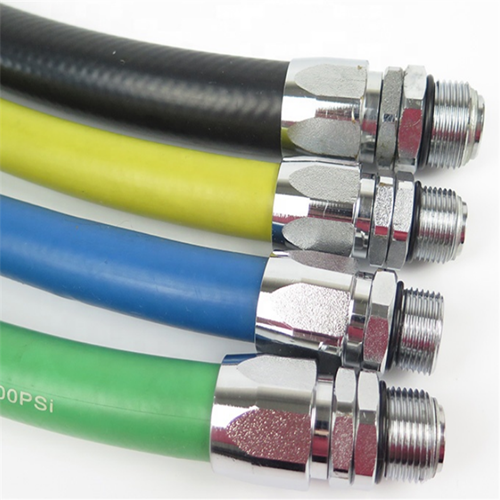335345435
Nov . 07, 2024 14:28 Back to list
Hydraulic Hose Connectors and Their Applications in Fluid Transfer Systems
Understanding Hydraulic Hose End Fittings A Comprehensive Overview
Hydraulic systems are integral to a wide array of industrial applications, ranging from construction machinery to automotive systems. At the heart of these hydraulic systems are hydraulic hoses, which transport fluid under high pressure. However, for these hoses to function effectively, they must be equipped with the right end fittings. This article delves into the significance, types, and selection criteria of hydraulic hose end fittings.
What are Hydraulic Hose End Fittings?
Hydraulic hose end fittings are critical components that connect the hydraulic hoses to various machinery and equipment. They serve to securely attach the hose to the hydraulic system while preventing any leaks or loss of pressure. These fittings come in various shapes, sizes, and materials to accommodate different hydraulic applications.
Types of Hydraulic Hose End Fittings
There are several types of hydraulic hose end fittings, each designed for specific applications and performance requirements
1. Threaded Fittings These fittings utilize male and female threads to connect hoses to components. Common types include JIC (Joint Industry Council), NPT (National Pipe Thread), and BSP (British Standard Pipe) fittings. They offer a secure connection and can handle varying pressure levels.
2. Flanged Fittings Flanged fittings are used in applications where a rigid connection is necessary. They have a flat face that allows them to be bolted to another surface. Flanges are often employed in high-pressure systems and provide a reliable seal to prevent fluid leakage.
3. Push-On Fittings These are designed for ease of use, allowing hoses to be pushed onto the fitting without the need for clamps. Push-on fittings are typically used in low-pressure applications and are favored for their simplicity and quick installation.
4. Barbed Fittings Often used with soft-walled hoses, barbed fittings feature a series of ridges that grip the hose when it is pushed onto the fitting. While easy to install, they are best for lower-pressure applications where a tight seal is essential.
hydraulic hose end fittings

5. Compression Fittings These fittings use a compression sleeve to create a seal between the hose and fitting. They are especially suitable for high-pressure scenarios and ensure a strong connection.
Key Considerations in Selecting Fittings
When choosing hydraulic hose end fittings, several factors must be taken into account
1. Compatibility Ensure that the fitting is compatible with the specific hydraulic hose being used. This includes matching the hose diameter, pressure rating, and fluid type.
2. Material The materials used for fittings can significantly affect performance. Options typically include steel, stainless steel, brass, and aluminum. Steel fittings are durable and suitable for high-pressure systems, while brass is resistant to corrosion and used in less demanding applications.
3. Pressure Ratings Each fitting comes with a pressure rating, which must match or exceed the operating pressure of the hydraulic system. Selecting a fitting with an inadequate pressure rating can lead to catastrophic failures.
4. Connection Type Consider the type of connection required for your application. This involves understanding if a threaded, flanged, or push-on connection is most appropriate for the hydraulic setup.
5. Environmental Factors The surrounding environment can influence the choice of fittings. Factors such as temperature extremes, exposure to chemicals, and potential for physical damage should guide decisions on the material and design of the fittings.
Conclusion
Hydraulic hose end fittings play an essential role in the functionality and safety of hydraulic systems. Their selection requires careful consideration of types, compatibility, material, pressure ratings, and environmental conditions. Understanding these fittings will not only ensure optimal performance of hydraulic systems but will also enhance safety and efficiency in various industrial applications. As technology continues to advance, the development of more specialized and efficient fittings will undoubtedly transform the landscape of fluid movement and management in industry.
-
SAE 100 R17 Black Smooth Cover Hydraulic Hose
NewsMar.07,2025
-
SAE 100 R17 Black Smooth Cover Hydraulic Hose
NewsMar.07,2025
-
SAE 100 R17 Black Smooth Cover Hydraulic Hose
NewsMar.07,2025
-
SAE 100 R17 Black Smooth Cover Hydraulic Hose
NewsMar.07,2025
-
SAE 100 R17 Black Smooth Cover Hydraulic Hose
NewsMar.07,2025
-
steel wire braided hydraulic hose
NewsMar.07,2025



